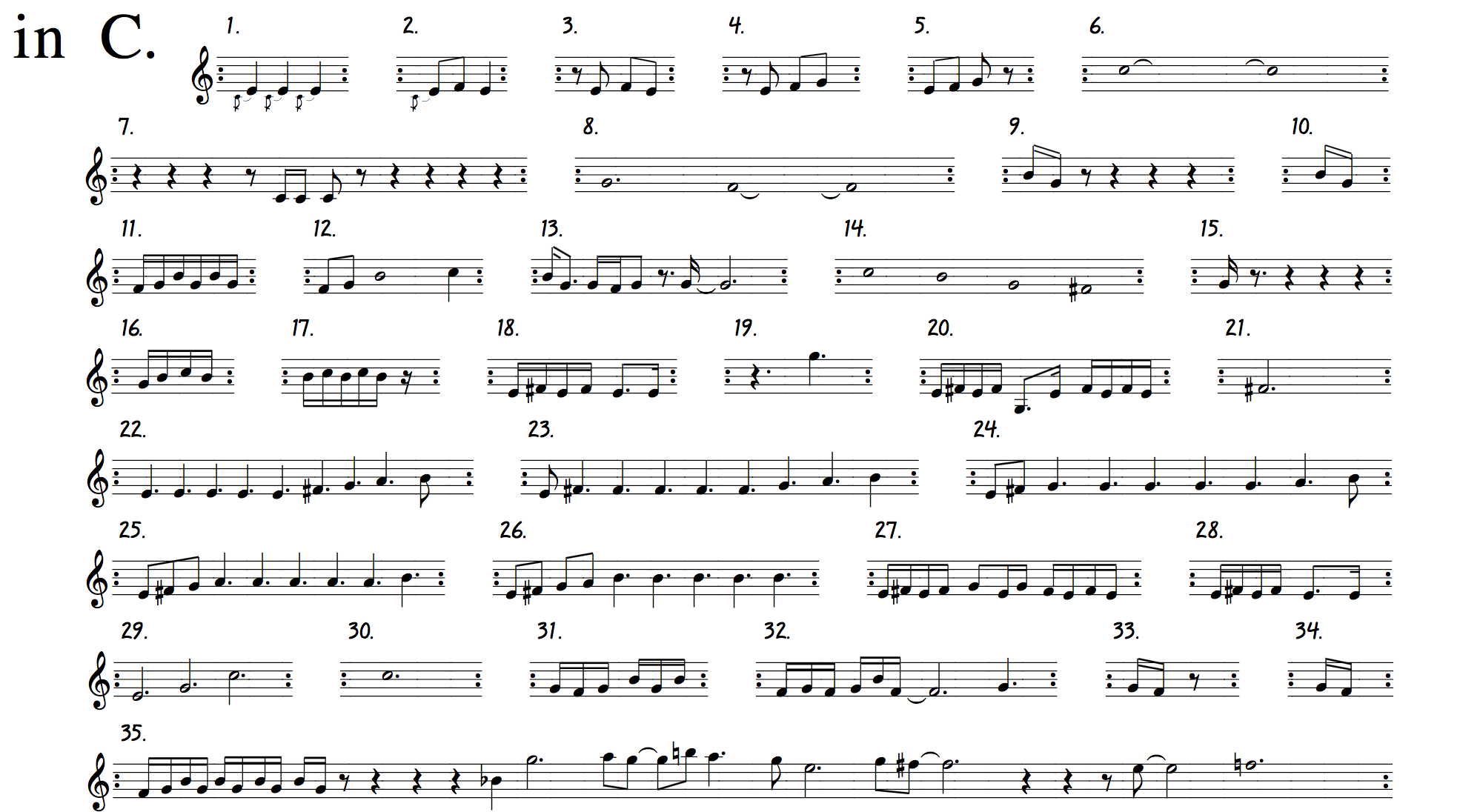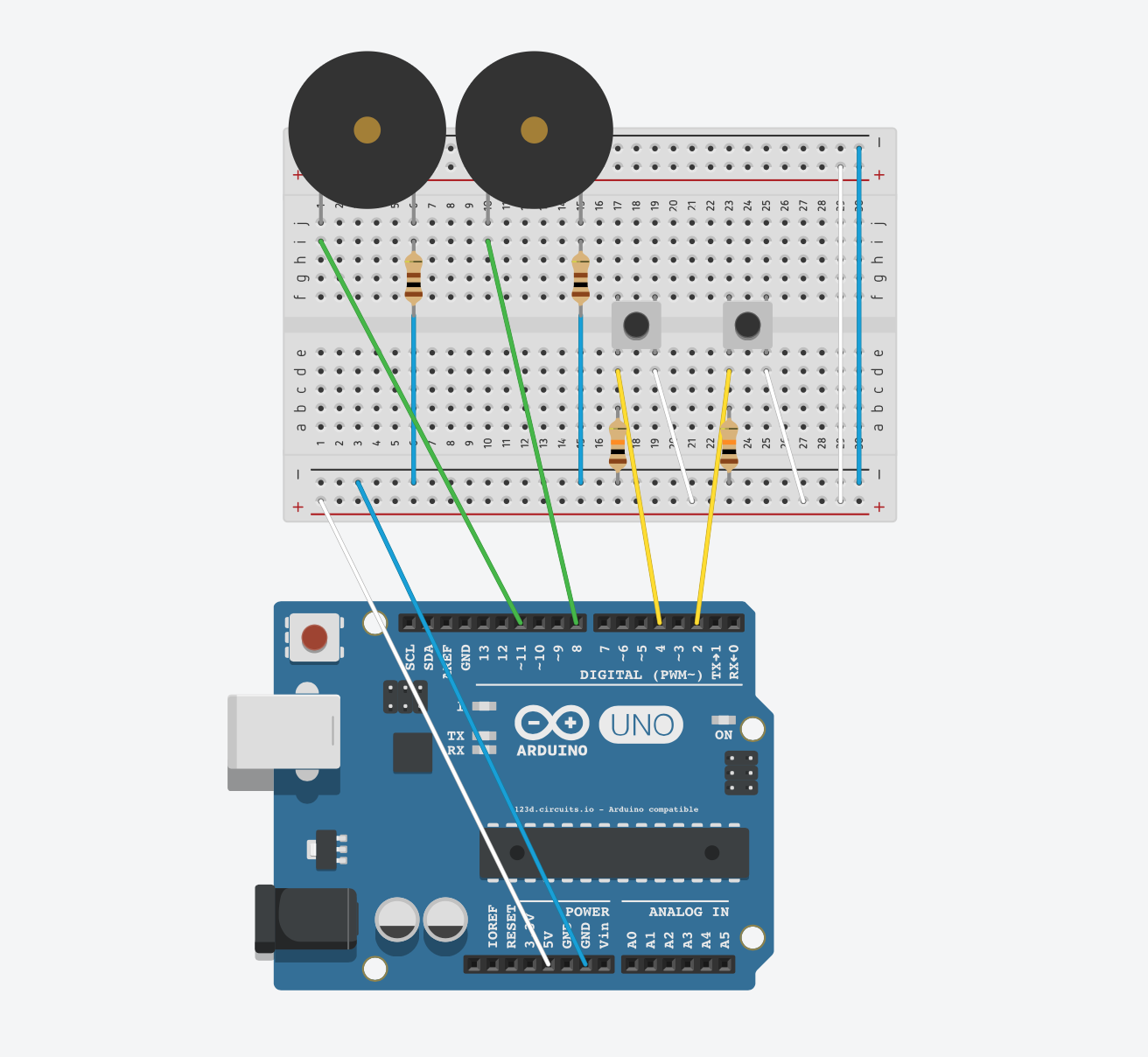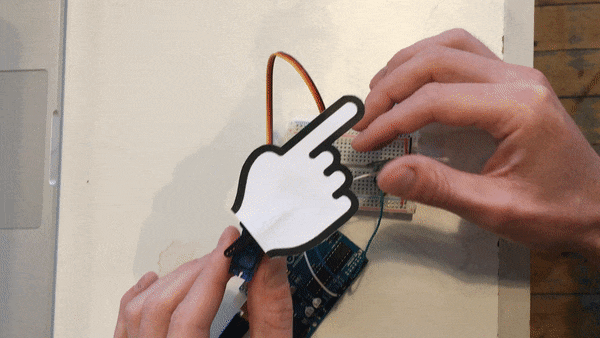Still wanting to work with sound, but feeling a bit defeated by yesterday’s (somewhat) unsuccessful pursuit, I wired up a potentiometer to a speaker. Turning the potentiometer controls the pitch as well as toggles between the two LEDs. This small project is an iteration on my previous “siren” in which the user alternated pressing two buttons to generate a distinct pitch associated with each LED. By now implementing a similar system but using the potentiometer, it’s a little more like a blended “weeee-wooo” sound heard from emergency vehicles. And I think the code is now more precise! Imagine the passenger in a police car having to turn a knob back and forth as they race to an emergency!



